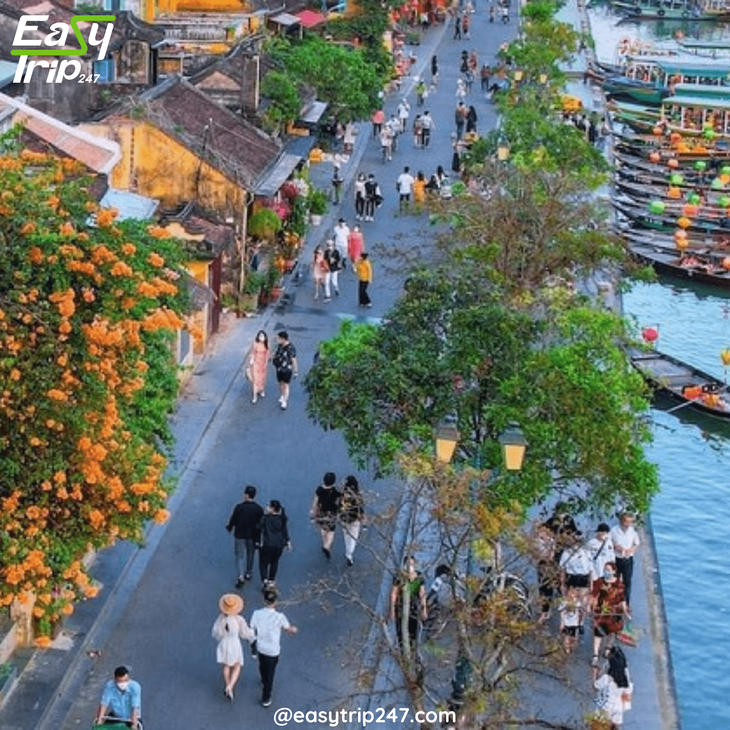Exploring Vietnam During the Dry Season: Pros and Cons
On
23/06/2025Reading time:
1 min
Summary:
For travelers considering their next Southeast Asian adventure, Vietnam consistently tops the list of must-visit destinations. With its dramatic landscapes, rich cultural tapestry, and world-famous cuisine, Vietnam promises an unforgettable journey.

Understanding Vietnam’s Dry Season
Vietnam’s climate varies by region, but the dry season generally runs from November to April in the south and October to April in the north and central areas. This extended period of sunshine and low humidity provides near-perfect travel conditions, especially for first-time visitors. If you're planning your trip around weather—and want to avoid downpours and steamy humidity—the dry season is often regarded as the ideal time to visit Vietnam.
Pros of Visiting Vietnam During the Dry Season
1. Excellent Weather Across the Country
One of the most significant advantages of traveling during the dry season is consistent weather. Northern Vietnam, including Hanoi and Sapa, boasts cool and dry air from November to February, ideal for trekking and city sightseeing. Central Vietnam—home to Hue, Da Nang, and Hoi An—enjoys pleasant, sunny days beginning in February, perfect for beach escapes and heritage exploration. In the south, areas like Ho Chi Minh City and the Mekong Delta experience tropical warmth and clear skies throughout. This uniformity of favorable weather is why many call it the ideal time to visit Vietnam.
2. Best Conditions for Outdoor Activities
Vietnam is a haven for outdoor enthusiasts. Whether you’re hiking in the northern highlands, kayaking in Halong Bay, biking through Hoi An’s countryside, or snorkeling in Phu Quoc, clear skies and low rainfall make the dry season perfect. Trails are safe, visibility is high, and travel disruptions are minimal. For active travelers, the dry season offers the ideal time to visit Vietnam to make the most of every adventure.
3. Festivals and Cultural Celebrations
The dry season overlaps with Vietnam’s most iconic festivals, including Tet, the Vietnamese Lunar New Year, usually celebrated between late January and mid-February. Streets come alive with flowers, parades, and traditional performances. Experiencing Vietnam during Tet is a cultural delight—and yet another reason why this period is often chosen as the ideal time to visit Vietnam. Other notable events during the dry season include the Perfume Pagoda Festival and the Hue Festival, both offering rich insight into local traditions.
4. Breathtaking Scenery
From golden rice fields to tranquil beaches, the dry season enhances Vietnam’s natural beauty. The crisp blue skies and radiant sunlight highlight the contrast between emerald mountains, turquoise waters, and the vibrant daily life of locals. Photographers and Instagrammers rejoice—this is undeniably the ideal time to visit Vietnam to capture its visual wonders.
5. Easy Travel and Logistics
The dry season also simplifies travel logistics. Roads are more reliable, flights are less likely to be delayed due to weather, and tours operate at full capacity. For travelers who want a stress-free experience, this stability makes the dry season the ideal time to visit Vietnam, particularly for those venturing through multiple cities and landscapes.
Cons of Visiting Vietnam During the Dry Season
While the dry season offers many advantages, there are some potential downsides travelers should be aware of before planning their journey.
1. Higher Prices and Crowds
With ideal weather comes increased demand. The dry season is peak travel time, and with that comes elevated prices for flights, hotels, and tours. Popular destinations like Halong Bay, Sapa, and Hoi An may feel crowded, particularly during the weeks surrounding Tet. If you're seeking peace and quiet or traveling on a tight budget, the dry season might not be your personal ideal time to visit Vietnam—unless you plan and book early.
2. Limited Local Experience During Tet
Tet, while culturally enriching, can also pose challenges. Many local businesses shut down for several days as families celebrate privately. Travelers may find it harder to book transportation, dine out, or participate in tours during this period. Although Tet is often a highlight, it’s worth noting that for a few days, the country essentially slows down. If you prefer a more active itinerary, this part of the dry season might not be the ideal time to visit Vietnam for you.
3. Some Natural Sites May Not Be at Their Peak
While the dry season enhances many destinations, others may lack the lush greenery or dramatic atmosphere that rains bring. Waterfalls may be less powerful, and rice terraces could be between harvests and plantings. If your goal is to see Vietnam’s landscapes at their most vibrant, you might consider alternative months. In this case, the dry season isn’t necessarily the ideal time to visit Vietnam for your specific interests.
Striking a Balance: When Is Your Ideal Time?
Determining the ideal time to visit Vietnam ultimately depends on your priorities. If you’re a first-time visitor seeking stable weather, rich cultural experiences, and breathtaking scenery, the dry season is an excellent choice. But if you're a budget-conscious traveler or looking to immerse yourself in rural life during less commercial times, you may find shoulder months like April or October more suitable.
No matter when you go, Vietnam is a destination that surprises and delights. But the dry season—with its perfect blend of adventure, culture, and comfort—is often the most recommended period, especially for those looking to maximize their experience with minimal disruptions. For these reasons, many seasoned travelers, bloggers, and travel agencies unanimously agree: the dry season is the ideal time to visit Vietnam.
Conclusion: Make the Most of the Dry Season
Exploring Vietnam during the dry season opens up a world of opportunities. From wandering through Hanoi’s ancient streets under a clear sky to lounging on Da Nang’s sunny beaches and cruising through Halong Bay’s emerald waters, this season checks nearly every box for an ideal holiday. Yes, there may be trade-offs—crowds, higher costs, and a few quiet days during Tet—but for the majority of travelers, the benefits far outweigh the downsides.
If you’re planning your adventure and wondering about the ideal time to visit Vietnam, the dry season should definitely be at the top of your list. With a little research and preparation, you’ll be rewarded with unforgettable memories, immersive cultural experiences, and some of the most captivating sights Asia has to offer.
Design Your Tour Today And Get A Quote. Contact Us Here: +84.975.504.825
Source: Easytrip247 Team compiled.
